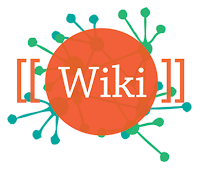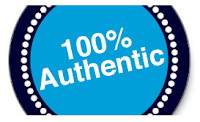| Lynn Greenky Syracuse University |
For my multimedia interview assignment, I created a PowerPoint video, http://tinyurl.com/qbvfecb with Lynn Greenky of Syracuse University on integrating technology into her course curriculum, CRS 225: Public Advocacy and used audio technology to create an external transcript of my interview. Specifically, I saved the interview transcript as an Adobe PDF document and added the audio track from my PowerPoint to each narration slide in the document (Oomen-Early, Bold, & Gallien, 2011). This assignment was a great learning activity for me because it was my first time creating a PowerPoint video as well as creating a PDF audio narration. Both activities required me to learn and develop new technological skills. Professor Greenky had a wealth of experience in technology integration and graciously discussed the success and challenges she has encountered in her goal to promote student engagement in a classroom-based learning environment. Overall, the interview and video design, development, and delivery process were very positive experiences.
ADOBE PDF
There are two ways to start the audio track in the Adobe PDF document:
- Double click the audio icon for the audio track to start playing or
- Place cursor over audio icon, right click mouse & then select,“Play File”.
Three-step multimedia producing
process
Plan, Produce and Publish
Plan: I researched the faculty member I was going to interview by visiting the Online Learning Services website at Syracuse University. This is the instructional design and training department which helps faculty and staff with face-to-face, blended, and online course and workshop design, development, and delivery.
Produce: Production cost was a major concern as I planned my multimedia interview. I completed my assignment using the following free and low cost tools:
- Digital recorder & free standing microphone (Total cost: $25.34)
- PowerPoint – Multimodal Representations: Images, text, & audio - Commercial software available via my work computer (Mayer, 2003; Mayer & Moreno, 2002) - Free
- Audacity – Audio: Used for splicing original audio track (Mayer & Moreno, 2003) - Free
- WeVideo - Video upload - Cloud-based video editing software - Free
- TinyURL - URL Reconfiguration - Free
- Adobe Acrobat XI Pro - Audio: Used for creating the interview transcript - Commercial software available via my work computer - Free
Fortunately, WeVideo was designed to be extremely accessible:
No installation - no IT Admin required
No hosting - no IT staff required to host an On-Premise solution
Works anywhere - in a browser at the office, in Starbucks, at home or on-the-go
Integrated mobile apps - record and make a quick edit on iOS and Android
Handles all media formats - easy upload and automatic conversion of media files
Adaptable editing mode - from novices to experienced video editors (WeVideo.com, 2013)

Questions
(1). What technology did you use to complete your multimedia assignment?
(2). What challenges did have in trying to complete the assignment?
(3). Was cost an issue or concern in completing the assignment?
Best,
~Aja
References
Mayer, R.E. (2003). The promise of multimedia learning: Using the same instructional design methods across different media. Learning and Instruction, 13, 125-139.
Mayer, R.E., & Moreno, R. (2002). Aids to computer-based multimedia learning. Learning and Instruction, 12, 107-119.
Mayer, R.E., & Moreno, R. (2003). Nine ways to reduce cognitive load in multimedia learning. Educational Psychologist, 38(1), 43-52.
Oomen-Early, J., Bold, M., & Gallien, T. (2011). Using online asynchronous audio communication in higher education. In K. King & T. Cox (Eds.), The professor's guide to taming technology: Leveraging digital media, web 2.0, and more for learning (pp. 33-65). Charlotte, NC: Information Age Publishing, Inc.
Images
Lynn Greenky. [Web Photograph]. Retrieved from http://vpa.syr.edu/sites/default/files/imagecache/vpa_3col/profile/Greenky_Lynn_9_2012_rs.jpg
(2013). Question icon. [Web Graphic]. Retrieved from http://espei.com/wp-content/uploads/2013/05/equipmentprotection3.png












